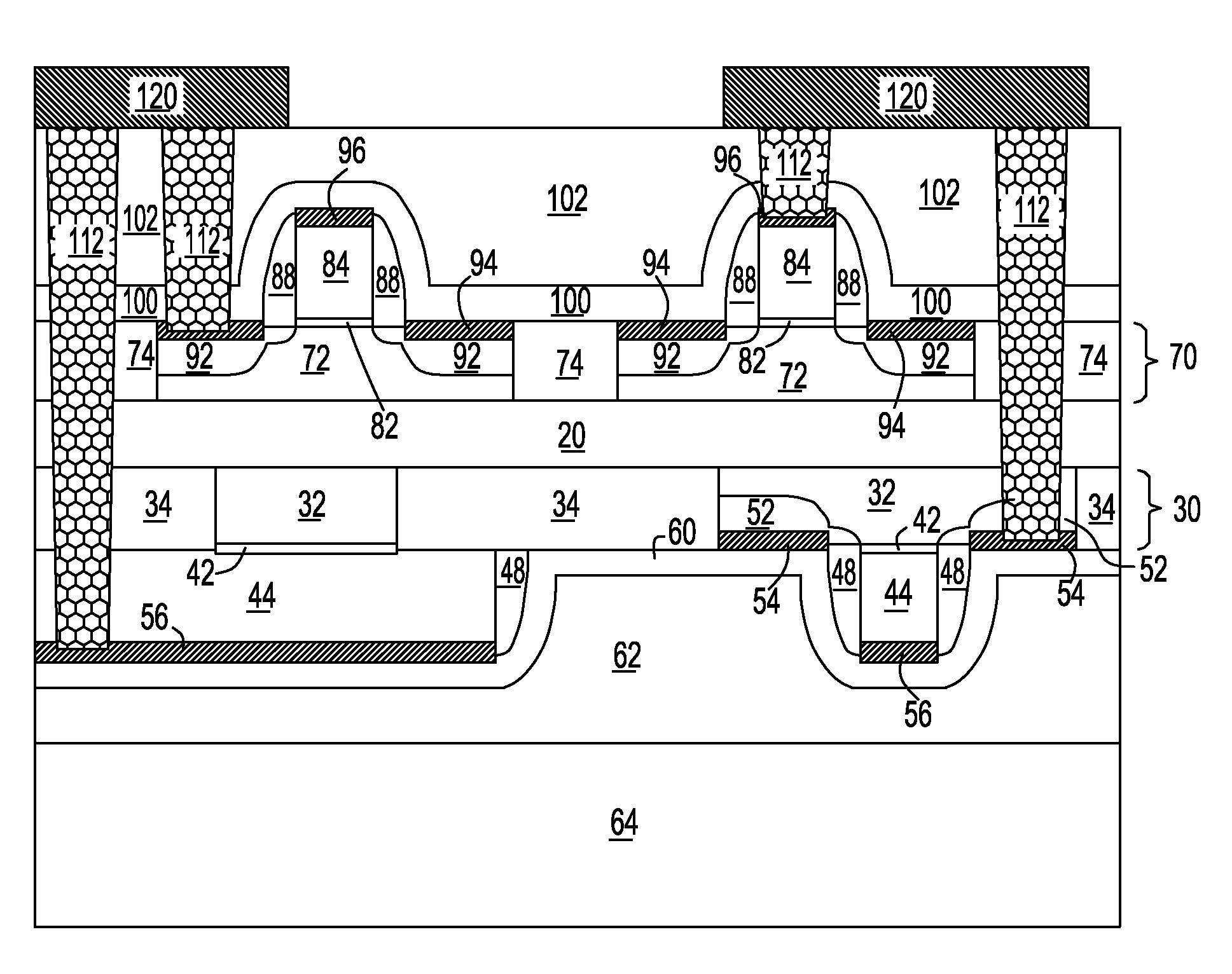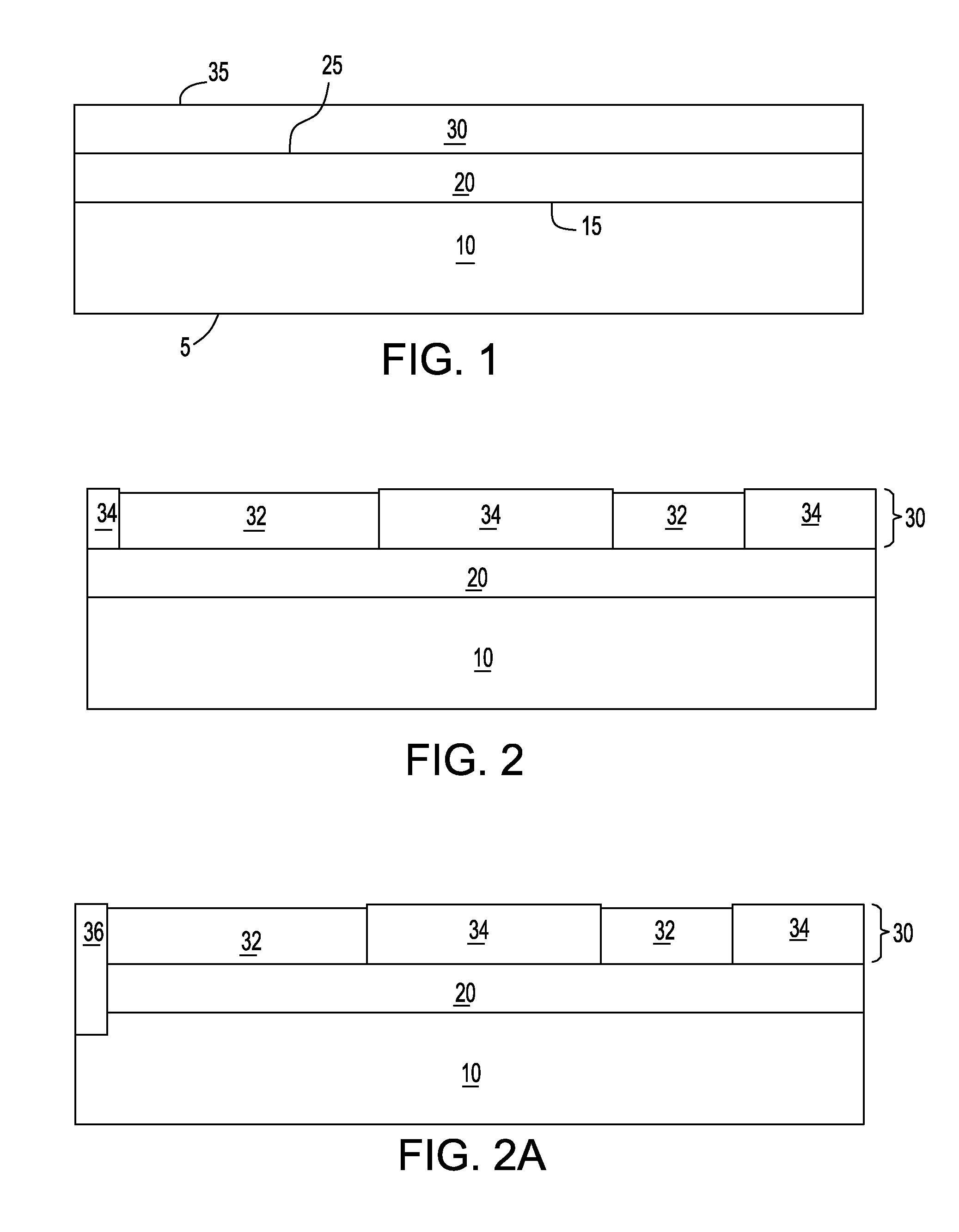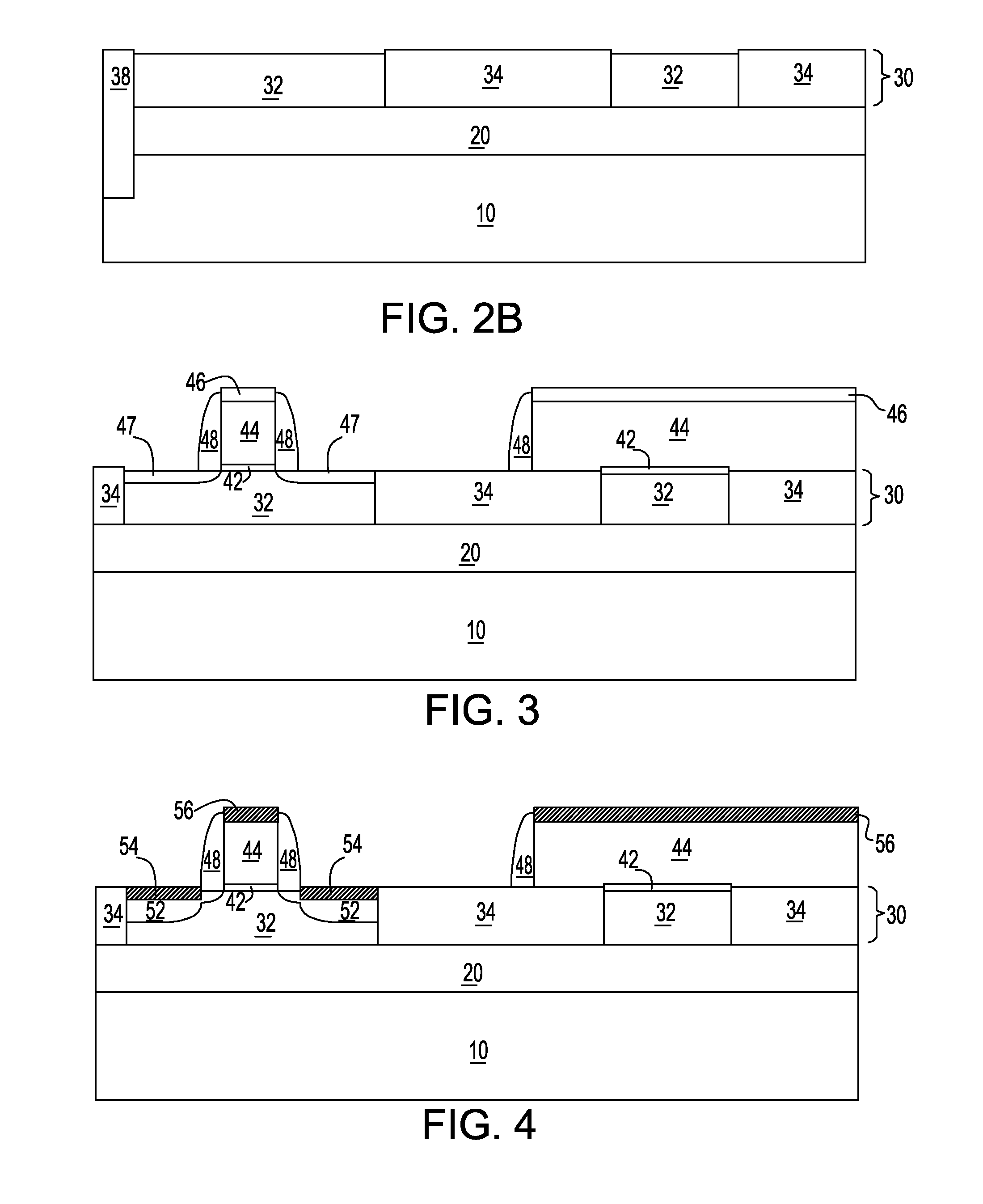Two-sided semiconductor-on-insulator structures and methods of manufacturing the same
a semiconductor and substrate technology, applied in the field of semiconductor devices, can solve the problems of increasing the boundary area between the two types of semiconductor devices, not using block masks, and not optimizing the stress of shallow trench isolation
- Summary
- Abstract
- Description
- Claims
- Application Information
AI Technical Summary
Benefits of technology
Problems solved by technology
Method used
Image
Examples
Embodiment Construction
[0040]As stated above, the present invention relates to a semiconductor structure and methods of manufacturing the same, in which first type semiconductor devices are formed on one side of a buried insulator layer and second type semiconductor devices are formed on the other side of the buried insulator layer, which is now described in detail with accompanying figures.
[0041]Referring to FIG. 1, a semiconductor-on-insulator (SOI) substrate is provided. The SOI substrate comprises a carrier substrate 10, a buried insulator layer 20, and a first semiconductor layer 30. Since the SOI substrate is later flipped upside down, the first semiconductor layer 30 is physically located beneath the buried insulator layer 20 in the final structure. For this reason, the first interface 25 between the buried insulator layer 20 and the first semiconductor layer 30 is herein referred to as a “bottom surface” of the buried insulator layer 20. For a similar reason, the second interface 15 between the bu...
PUM
 Login to View More
Login to View More Abstract
Description
Claims
Application Information
 Login to View More
Login to View More - R&D
- Intellectual Property
- Life Sciences
- Materials
- Tech Scout
- Unparalleled Data Quality
- Higher Quality Content
- 60% Fewer Hallucinations
Browse by: Latest US Patents, China's latest patents, Technical Efficacy Thesaurus, Application Domain, Technology Topic, Popular Technical Reports.
© 2025 PatSnap. All rights reserved.Legal|Privacy policy|Modern Slavery Act Transparency Statement|Sitemap|About US| Contact US: help@patsnap.com



